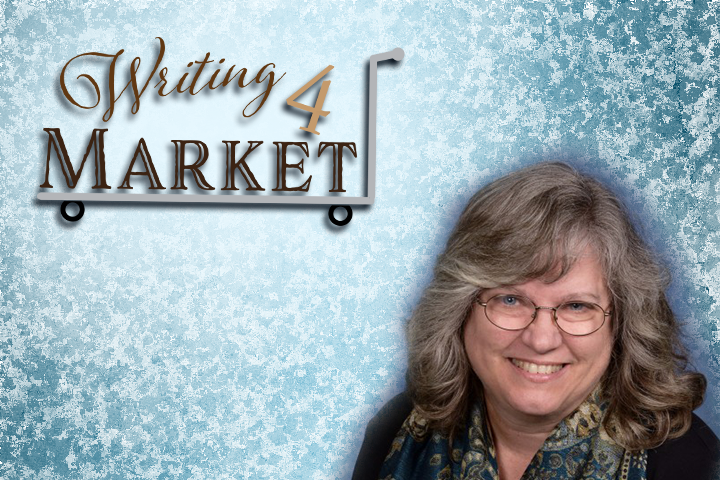Today’s prospects are on a mission. They have aspirations. They’re on a journey to become something more than they are today. When I create content to help your prospect succeed in their mission, you succeed as well. This is why addressing scarcity is less effective today than focusing on empowerment.
Your prospect is actively seeking those who build them and their business up. They want to belong to a group where they’re seen as smart and successful. Thus, your marketing success comes from messaging that delivers what he or she needs. That requires a strategy based on five things. Why. Who. What. When. How.
The order is significant!
1. Why
It’s far to common for business owners to limit their why to themselves. “I need to increase my sales, so I need content.” “I need Google to find me, so I need content for SEO.” These ‘whys’ are shallow and self-serving.
However, if you consider your prospect’s need to increase sales, then your ‘why’ changes. You ask, “Why should my prospect be interested in this?”
If you recognize the obstacles your prospect is facing as he or she seeks to meet personal and business goals, then your ‘why’ goes deeper. Your content serves and empowers–just what today’s prospects are looking for. You’ll do better if you’re helping your prospect become who he or she is seeking to become—which includes becoming more successful financially.
2. Who
Your ‘why’ will also deepen as you begin exploring who your prospect is. Be as precise as possible when you identify who you are talking to. This is the most important factor for success. When you know who you’re reaching out to, native intuition will kick in. Your content will be on target.
Choose who your audience is. Identify who you want and who you don’t. This helps you develop content that appeals to the prospects you want to attract. It can also help you present content in a way that steers those you don’t want away.
Next, go beyond the buyer’s persona. Think of your buyer as a character. Place them inside a story where they interact with your brand. Imagine your prospect is a protagonist facing challenges, finding the solutions to overcome the challenge.
Remember that your prospects are not just like you. There may be things you know that they don’t. There may be things they want that you don’t. It’s important to step into their shoes—to see the world from their perspective. An empathy map can help with this.
Use the fiction technique of developing a character bible. Consider as many of your prospect’s interactions with you and your competitors as possible and develop scenarios of what could happen in each situation.
3. What
According to David Clark, “What you say is more important than how.” That idea might be frightening to some, especially when we’ve been taught how important it is to say things in the right way. At the same time, how you say it can be part of what you say. I’ve concluded they’re like twin sides of a coin.
What = Story but How You Tell the Story = Rate of Success
Stories are the most effective sales tool you have, yet what kind of story should you tell? A monomyth. In a monomyth, you place your prospect as the hero. Your prospect faces a challenge (or more than one). You mentor your prospect so they conquer the foe. It’s a very successful strategy that far to few businesses use.
What many businesses do in contrast is they position their prospect as a victim who needs rescue. The prospect wasn’t smart enough. The prospect was foolish. They need someone to deliver them. While this approach will still work with some prospects, it shuts the door for many.
4. When
Timing is important. Frequently, you don’t lose to the competitor. You lose out to inaction.
We need to engineer a journey that’s optimized for your prospect. At the core of this concept is the touch point. Effective touch points occur when you actively create content to fit the event. For example your first when or touch point may be a direct mail piece. This sparks an interest, so they go to your website. This becomes a new touch point.
They read the content there, which invites them to download a case study that shares the experience of someone ‘just like them’. In exchange, you ask for an email.
This kicks in an email auto-response sequence. Each email is engineered to lead the prospect toward a buying decision. One email or more may address questions that produce uncertainty in the prospect. Others may help the prospect see the problems their facing from a new perspective. Still others may help the prospect recognize the progress they’ve already begun making toward their goal using content you’ve already provided. This builds pride and a sense of accomplishment. Social proof, additional case studies and white papers could further enhance confidence that you offer the right solution.
5. How
Now I’m almost ready to begin writing. It’s time to put all the effort I’ve taken to understand who your prospects are into practice. Now I must communicate with the language they use in daily life.
If I use metaphors, how I write for a Gen-Xer isn’t likely to be the same for a Baby Boomer. That’s why it can be helpful to find out what your prospect reads. It helps me learn the language of your audience. Don’t have that information. I can use the keywords your prospects use to find you to gain insights. Forums for your industry can also give me insights into the language your prospects are using.
I ask myself, “Is this the right way to explain what you offer to your prospect?” Why? Because how I say it does matter.
Note: Concepts shared in this post were gained from Brian Clark, via a video American Writers and Artists Inc. posted as part of a February 6, 2018 article.
